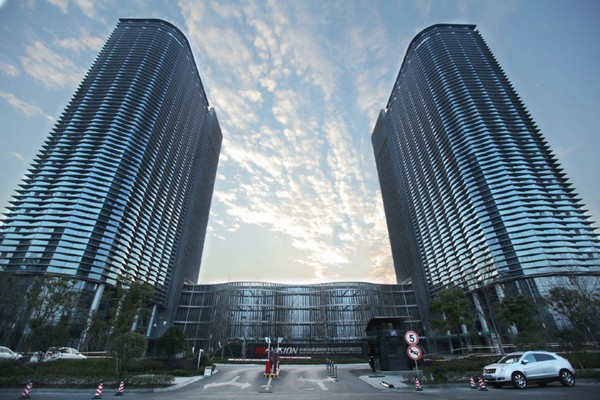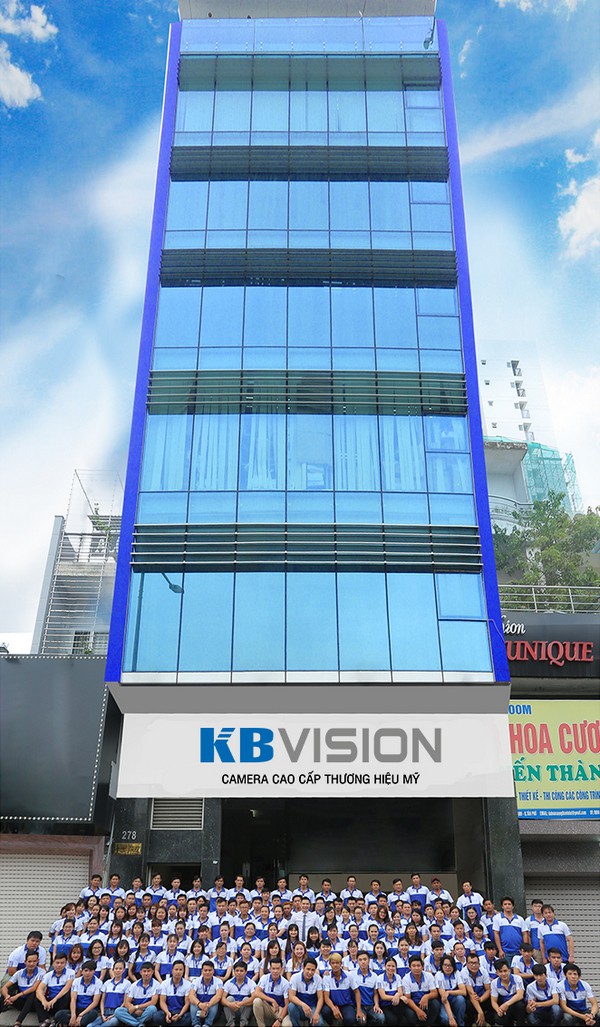STEROIDS
Moles from melanotan 2
NỘI DUNG TRANG
Learn about the benefits and risks of using melanotan 2 to enhance your tan and reduce the appearance of moles. Discover how this synthetic hormone works and what precautions to take when using it.
| Payment: | Bitcoin, LiteCoin, Zelle, Credit Cards, Western Union, MoneyGram |
| Delivery: | Express (2-5 days), Fedex, DHL |
| Prescription: | OVER THE COUNTER |
| Where to Buy STEROIDS online? | https://owal23.edu.pl |
Where to Buy Anabolic Steroids Online:
Moles from Melanotan 2: Causes, Treatment, and Prevention
Popular Questions about Moles from melanotan 2:
What is Melanotan 2?
Melanotan 2 is a synthetic peptide that stimulates the production of melanin in the body, resulting in tanning of the skin.
How is Melanotan 2 used?
Melanotan 2 is typically injected into the skin using a small needle. It can be self-administered or done by a healthcare professional.
What are the risks of using Melanotan 2?
Using Melanotan 2 can have several risks, including moles and freckles appearing or darkening, increased risk of skin cancer, and hormonal imbalances.
Can Melanotan 2 cause moles?
Yes, Melanotan 2 can cause moles to appear or darken on the skin. This is due to the increased production of melanin.
Are there any ways to prevent moles from Melanotan 2?
While it is difficult to prevent moles from appearing or darkening due to Melanotan 2, it is important to use sun protection, such as sunscreen, to minimize the risk of skin damage.
What should I do if I notice new moles after using Melanotan 2?
If you notice new moles or changes in existing moles after using Melanotan 2, it is important to consult a dermatologist for a thorough skin examination and to rule out any potential skin cancer.
Can Melanotan 2 increase the risk of skin cancer?
Yes, using Melanotan 2 can increase the risk of skin cancer due to the increased production of melanin and prolonged exposure to UV radiation.
Is Melanotan 2 legal?
Melanotan 2 is not approved by regulatory authorities for use in most countries, including the United States. It is considered a research chemical and is often obtained through illicit means.
What is Melanotan 2?
Melanotan 2 is a synthetic peptide that stimulates the production of melanin in the body, resulting in a tan. It is often used as a tanning agent or as a treatment for certain skin conditions.
Can using Melanotan 2 cause moles?
Yes, using Melanotan 2 can cause an increase in the number of moles on the skin. This is because the peptide stimulates the production of melanin, which can lead to the formation of new moles.
How to order steroids online?
Moles from Melanotan 2: Causes, Risks, and Prevention
Melanotan 2 is a synthetic hormone that has gained popularity in recent years for its ability to darken the skin and provide a tanned appearance without exposure to the sun. While many people use Melanotan 2 for cosmetic reasons, there are potential risks and side effects associated with its use, including the development of moles.
One of the causes of moles from Melanotan 2 is the hormone’s ability to stimulate the production of melanin, the pigment responsible for skin color. When Melanotan 2 is injected, it activates melanocytes, the cells that produce melanin, causing them to produce more pigment. This increased production of melanin can lead to the formation of new moles or the darkening of existing ones.
While moles from Melanotan 2 are generally harmless, they should be monitored for any changes in size, shape, or color, as these could be signs of skin cancer. It is important to consult a healthcare professional if you notice any unusual changes in your moles or if you have a history of skin cancer.
Prevention of moles from Melanotan 2 can be achieved by using the hormone responsibly and following safe practices. This includes starting with a low dosage and gradually increasing it if necessary, as well as using sunscreen and protective clothing to minimize sun exposure. It is also important to be aware of the potential risks and side effects of Melanotan 2 and to weigh them against the desired cosmetic benefits before using the hormone.
What Causes Moles from Melanotan 2?
Melanotan 2 is a synthetic hormone that stimulates the production of melanin in the body, leading to darkening of the skin. While it is primarily used as a tanning agent, it has also been found to cause the development of moles in some individuals.
The exact mechanism by which Melanotan 2 causes moles is not fully understood. However, it is believed to be related to the increased production of melanin in the skin. Melanin is the pigment responsible for the color of our skin, hair, and eyes. When the production of melanin is stimulated, it can lead to the formation of moles.
It is important to note that not everyone who uses Melanotan 2 will develop moles. The development of moles is thought to be influenced by a combination of factors, including individual genetics and the dosage and duration of Melanotan 2 use.
Some individuals may be more prone to developing moles due to their genetic predisposition. People with fair skin or a history of melanoma in their family may be at a higher risk of developing moles from Melanotan 2 use.
Additionally, the dosage and duration of Melanotan 2 use may also play a role in the development of moles. Higher doses and longer durations of use have been associated with an increased risk of developing moles.
It is important to note that moles from Melanotan 2 use are typically benign, meaning they are not cancerous. However, it is still recommended to monitor any new or changing moles and consult a healthcare professional if there are any concerns.
To minimize the risk of developing moles from Melanotan 2, it is recommended to use the lowest effective dose and to follow the recommended usage guidelines. It is also important to protect the skin from excessive sun exposure, as this can further increase the risk of developing moles.
Melanotan 2 and Skin Changes
Melanotan 2 is a synthetic peptide that is commonly used for tanning purposes. While it can provide a tan-like effect on the skin, it is important to be aware of the potential skin changes that may occur as a result of using Melanotan 2.
Increased Pigmentation
One of the main effects of Melanotan 2 is increased pigmentation of the skin. This can lead to a darker skin tone and a more pronounced tan. However, it is important to note that this increased pigmentation may not be evenly distributed across the body and can result in patchy or uneven tanning.
Moles and Freckles
Another potential side effect of Melanotan 2 is the development of moles or freckles. Melanotan 2 works by stimulating the production of melanin, which can lead to the formation of new moles or the darkening of existing ones. It is important to monitor any changes in moles or freckles and consult a dermatologist if any concerns arise.
Increased Sun Sensitivity
Using Melanotan 2 can also increase the sensitivity of the skin to sunlight. This means that the skin may burn more easily and be more prone to sun damage. It is essential to take extra precautions when exposing the skin to the sun, such as using sunscreen with a high SPF, wearing protective clothing, and avoiding prolonged sun exposure.
Prevention and Safety Measures
To minimize the risk of skin changes and other potential side effects, it is important to use Melanotan 2 responsibly and follow recommended guidelines. Here are some safety measures to consider:
- Start with a low dosage and gradually increase if necessary.
- Consult a healthcare professional before using Melanotan 2, especially if you have any pre-existing skin conditions.
- Protect your skin from excessive sun exposure and use sunscreen regularly.
- Monitor any changes in your skin, including the appearance of new moles or freckles, and seek medical advice if needed.
By taking these precautions and being mindful of the potential risks, you can enjoy the benefits of Melanotan 2 while minimizing the likelihood of experiencing unwanted skin changes.
Increased Melanin Production
Melanotan 2 is a synthetic peptide that stimulates the production of melanin in the body. Melanin is the pigment responsible for the color of our skin, hair, and eyes. When melanin production is increased, it can lead to a darker skin tone.
How Melanotan 2 Works
Melanotan 2 works by binding to melanocortin receptors in the skin. These receptors are responsible for regulating the production of melanin. When Melanotan 2 binds to these receptors, it activates them and triggers an increase in melanin production.
Once the melanocortin receptors are activated, a series of chemical reactions occur in the body. These reactions stimulate the production of melanin, which is then distributed to the skin, hair, and eyes.
Benefits of Increased Melanin Production
There are several benefits to increased melanin production, including:
- Protection from UV radiation: Melanin acts as a natural sunscreen, absorbing and scattering UV radiation from the sun. This can help protect the skin from sunburns and reduce the risk of skin cancer.
- Enhanced tanning: Increased melanin production can result in a faster and darker tan. This is why Melanotan 2 is often used by individuals who want to achieve a deep, long-lasting tan.
- Improved appearance: Many people find that a darker skin tone enhances their appearance and boosts their self-confidence.
Potential Risks and Side Effects
While increased melanin production can have its benefits, it is important to be aware of the potential risks and side effects. Some of the possible risks include:
- Increased risk of skin cancer: Although melanin provides some protection against UV radiation, excessive exposure to the sun can still increase the risk of skin cancer.
- Uneven skin pigmentation: In some cases, increased melanin production can result in uneven skin pigmentation, leading to the formation of dark spots or patches on the skin.
- Moles and freckles: Melanotan 2 can cause the development of new moles and freckles on the skin. While most of these are harmless, it is important to monitor them for any changes in size, shape, or color.
Prevention and Monitoring
To minimize the risks associated with increased melanin production, it is important to take certain precautions:
- Limit sun exposure: Avoid excessive sun exposure, especially during peak hours when the sun’s rays are the strongest. Use sunscreen with a high SPF, wear protective clothing, and seek shade when necessary.
- Regular skin checks: Monitor your skin for any changes, such as new moles, changes in existing moles, or unusual spots. If you notice anything suspicious, consult a dermatologist for further evaluation.
- Consult a healthcare professional: Before using Melanotan 2 or any other tanning peptide, it is important to consult with a healthcare professional. They can provide guidance on proper usage, potential risks, and monitor your overall health.
By following these precautions and monitoring your skin regularly, you can enjoy the benefits of increased melanin production while minimizing the potential risks.
Hormonal Imbalance and Moles
Hormonal imbalance can have various effects on the body, including the development of moles. Moles are small, pigmented spots on the skin that can vary in size, shape, and color. They are usually harmless, but in some cases, they can be a sign of an underlying hormonal imbalance.
Causes of Hormonal Imbalance
There are several factors that can contribute to hormonal imbalance, including:
- Puberty: During puberty, hormonal changes can cause an increase in the number of moles on the body.
- Pregnancy: Hormonal fluctuations during pregnancy can also lead to the development of new moles.
- Menopause: As women go through menopause, hormonal changes can cause moles to appear or change in size or color.
- Hormone therapy: Certain hormone therapies, such as those used to treat infertility or menopausal symptoms, can also affect mole development.
Risks of Hormonal Imbalance and Moles
While most moles are harmless, it is important to monitor them for any changes that could indicate a more serious condition. Some potential risks associated with hormonal imbalance and moles include:
- Melanoma: In rare cases, moles can develop into melanoma, a type of skin cancer. Hormonal imbalances can increase the risk of melanoma development.
- Unwanted hair growth: Hormonal imbalances can also lead to excessive hair growth, which may be a sign of an underlying condition.
- Acne: Hormonal imbalances can contribute to the development of acne, which can leave behind scars or dark spots on the skin.
Prevention and Treatment
Preventing hormonal imbalances can help reduce the risk of developing moles and other related conditions. Some tips for prevention include:
- Maintaining a healthy lifestyle: Eating a balanced diet, exercising regularly, and managing stress can help keep hormones in balance.
- Avoiding hormone-disrupting substances: Limiting exposure to chemicals found in certain beauty products, plastics, and pesticides can help prevent hormonal imbalances.
- Regular skin checks: Monitoring moles and seeking medical attention for any changes in size, shape, or color can help detect potential issues early.
If a hormonal imbalance is suspected, it is important to consult with a healthcare professional for proper diagnosis and treatment. They may recommend hormone therapy or other interventions to help restore hormonal balance and reduce the risk of mole development.
UV Exposure and Moles
Exposure to ultraviolet (UV) radiation is a major risk factor for the development of moles. UV radiation, which comes from the sun and artificial sources like tanning beds, can cause damage to the DNA in skin cells. This damage can lead to the formation of moles.
There are two types of UV radiation that can affect the skin: UVA and UVB. UVA rays penetrate deep into the skin and can cause long-term damage, while UVB rays primarily affect the outer layers of the skin and are the main cause of sunburn.
How UV Exposure Leads to Mole Formation
When the skin is exposed to UV radiation, it triggers the production of melanin, the pigment responsible for giving color to the skin. Melanin helps to protect the skin from further damage by absorbing some of the UV radiation.
However, excessive UV exposure can overwhelm the skin’s ability to produce melanin, leading to sunburn and an increased risk of developing moles. The body may also produce an excess amount of melanin in response to UV radiation, resulting in the formation of dark, pigmented moles.
Preventing Moles from UV Exposure
Protecting your skin from UV radiation is crucial for preventing the formation of moles. Here are some tips to minimize your UV exposure:
- Wear sunscreen with a high SPF (sun protection factor) and reapply it every two hours.
- Avoid direct sun exposure during peak hours, typically between 10 am and 4 pm.
- Wear protective clothing, such as long-sleeved shirts, pants, and wide-brimmed hats.
- Seek shade whenever possible, especially if you’re spending a prolonged period outdoors.
- Avoid using tanning beds, as they emit harmful UV radiation.
By taking these precautions, you can reduce your risk of developing moles and protect your skin from the harmful effects of UV radiation.
Genetics and Moles
Moles, also known as melanocytic nevi, are common skin growths that can vary in size, shape, and color. While moles can be caused by a variety of factors, including exposure to sunlight and hormonal changes, genetics also play a significant role in their development.
Genetic Factors
Several genes have been identified that are associated with the development of moles. One such gene is the MC1R gene, which plays a role in determining hair and skin color. Variations in this gene can lead to an increased number of moles and a higher risk of developing melanoma, a type of skin cancer.
Other genes, such as CDKN2A and CDK4, have also been linked to the development of moles. These genes are involved in regulating cell growth and division, and mutations in these genes can increase the risk of developing both moles and melanoma.
Familial Atypical Multiple Mole Melanoma Syndrome (FAMMM)
Familial Atypical Multiple Mole Melanoma Syndrome (FAMMM) is a hereditary condition characterized by the presence of numerous atypical moles and an increased risk of developing melanoma. Individuals with FAMMM often have a family history of melanoma and may carry mutations in the CDKN2A or CDK4 genes.
People with FAMMM should be vigilant about monitoring their moles and have regular skin exams to detect any changes that may indicate the development of melanoma.
Prevention and Monitoring
While genetics play a role in the development of moles, there are steps that can be taken to prevent their formation and reduce the risk of melanoma:
- Limit sun exposure and use sunscreen with a high SPF
- Wear protective clothing, such as hats and long sleeves, when outdoors
- Avoid tanning beds and sunlamps
- Perform regular self-exams and monitor moles for any changes in size, shape, or color
- Consult a dermatologist for regular skin exams
If you have a family history of moles or melanoma, it is important to discuss this with your healthcare provider. They can provide guidance on monitoring and managing your risk.
Side Effects of Melanotan 2
Melanotan 2, a synthetic hormone that stimulates the production of melanin in the body, is commonly used for tanning purposes. While it can provide desirable effects such as darkening of the skin and increased libido, it is important to be aware of the potential side effects that may occur with its use.
1. Nausea and Vomiting
One of the most common side effects of Melanotan 2 is nausea and vomiting. This can occur shortly after administration and may last for a few hours. It is important to stay hydrated and avoid consuming large meals before or after using Melanotan 2 to help reduce the likelihood of experiencing these side effects.
2. Skin Discoloration and Moles
Melanotan 2 can cause changes in skin pigmentation, leading to uneven skin tone or darkening of certain areas of the body. Additionally, it may increase the number of moles on the skin. It is important to monitor any changes in the appearance of moles and seek medical advice if necessary.
3. Increased Blood Pressure
Another potential side effect of Melanotan 2 is an increase in blood pressure. This can be particularly concerning for individuals with pre-existing hypertension or cardiovascular conditions. Regular monitoring of blood pressure is recommended for those using Melanotan 2.
4. Erectile Dysfunction
While Melanotan 2 is known to increase libido, it may also cause erectile dysfunction in some individuals. This side effect is usually temporary and resolves once the use of Melanotan 2 is discontinued. However, it is important to consult with a healthcare professional if this side effect persists or becomes bothersome.
5. Freckles and Sunspots
Some individuals may notice an increase in freckles or sunspots on their skin with the use of Melanotan 2. These dark spots are usually harmless but should be monitored for any changes in size, shape, or color.
6. Allergic Reactions
In rare cases, individuals may experience allergic reactions to Melanotan 2. Symptoms may include rash, itching, swelling, or difficulty breathing. If any allergic reactions occur, immediate medical attention should be sought.
7. Injection Site Reactions
As Melanotan 2 is typically administered via subcutaneous injections, injection site reactions such as redness, swelling, or bruising may occur. Proper injection technique and hygiene can help minimize these reactions.
It is important to note that the side effects of Melanotan 2 can vary from person to person, and not everyone will experience these effects. If you are considering using Melanotan 2, it is recommended to consult with a healthcare professional to discuss the potential risks and benefits.
Melanotan 2 and Skin Cancer Risk
Melanotan 2 is a synthetic peptide that is often used as a tanning agent to darken the skin. While it can provide a tan-like appearance without sun exposure, it is important to be aware of the potential risks associated with its use, including an increased risk of skin cancer.
How Melanotan 2 Works
Melanotan 2 works by stimulating the production of melanin, the pigment responsible for skin, hair, and eye color. This increased melanin production can lead to a darker skin tone, similar to a natural tan.
Link to Skin Cancer
Excessive exposure to ultraviolet (UV) radiation, whether from the sun or artificial sources such as tanning beds, is a known risk factor for skin cancer. Melanotan 2 can cause the skin to darken without the need for UV exposure, leading some individuals to believe that it provides a safer alternative to traditional tanning methods.
However, it is important to note that while Melanotan 2 may provide a tan-like appearance, it does not provide any protection against UV radiation. This means that individuals using Melanotan 2 may still be at risk for skin damage and an increased risk of skin cancer if they do not take proper sun protection measures.
Prevention and Risk Reduction
If you choose to use Melanotan 2, it is important to take steps to reduce your risk of skin cancer. This includes:
- Limiting sun exposure, especially during peak UV hours (10 am to 4 pm)
- Wearing protective clothing, such as long-sleeved shirts, pants, and wide-brimmed hats
- Using broad-spectrum sunscreen with a high SPF (at least 30) and reapplying it every two hours
- Avoiding tanning beds and other artificial sources of UV radiation
Regular skin checks and self-examinations are also important for early detection of any potential skin cancer. If you notice any changes in your moles, such as asymmetry, irregular borders, changes in color or size, or any new growths, it is important to consult a dermatologist for further evaluation.
Conclusion
Melanotan 2 may provide a tan-like appearance without sun exposure, but it does not provide any protection against UV radiation. This means that individuals using Melanotan 2 may still be at risk for skin damage and an increased risk of skin cancer. It is important to take proper sun protection measures and regularly monitor your skin for any changes. Consult a dermatologist if you have any concerns.
How to Prevent Moles from Melanotan 2
1. Start with a low dosage
One of the best ways to prevent the development of moles from Melanotan 2 is to start with a low dosage. By gradually increasing the dosage over time, you can allow your body to adjust to the effects of the peptide without overwhelming it. This can help minimize the risk of developing moles.
2. Use a reputable source
When purchasing Melanotan 2, it is important to ensure that you are using a reputable source. This can help minimize the risk of purchasing a product that is contaminated or of low quality, which could potentially increase the likelihood of developing moles.
3. Apply sunscreen regularly
Since Melanotan 2 increases the production of melanin in the skin, it is important to protect your skin from excessive sun exposure. Applying sunscreen regularly can help prevent the formation of moles and reduce the risk of skin damage.
4. Monitor your skin
Regularly monitoring your skin for any changes or new moles is crucial in preventing moles from Melanotan 2. If you notice any unusual or concerning skin changes, it is important to consult a dermatologist for further evaluation.
5. Stay hydrated
Keeping your body hydrated can help support healthy skin and minimize the risk of developing moles. Drink plenty of water throughout the day to maintain optimal hydration levels.
6. Limit sun exposure
In addition to using sunscreen, it is important to limit your sun exposure, especially during peak hours when the sun’s rays are the strongest. Seek shade, wear protective clothing, and avoid tanning beds to reduce the risk of developing moles.
7. Consult a healthcare professional
If you are considering using Melanotan 2 or have any concerns about the development of moles, it is recommended to consult a healthcare professional. They can provide personalized advice and guidance based on your individual circumstances.
8. Be aware of potential side effects
It is important to be aware of the potential side effects of Melanotan 2, including the development of moles. By understanding the risks and being proactive in preventing them, you can make informed decisions about the use of this peptide.
9. Follow recommended usage guidelines
Always follow the recommended usage guidelines provided by the manufacturer or healthcare professional. Using Melanotan 2 as directed can help minimize the risk of developing moles and other potential side effects.
10. Seek medical attention if necessary
If you experience any concerning symptoms or side effects while using Melanotan 2, it is important to seek medical attention. Prompt medical intervention can help address any issues and prevent further complications.
Regular Skin Examinations
Regular skin examinations are an important part of maintaining skin health and detecting any changes or abnormalities early on. This is particularly important for individuals who use Melanotan 2, as it can increase the risk of developing moles and other skin changes.
Here are some key points to consider when performing regular skin examinations:
- Frequency: It is recommended to perform a skin examination at least once a month. This allows for regular monitoring of any changes in the skin.
- Method: Start by examining your entire body, including hard-to-see areas such as the back, scalp, and between the toes. Use a mirror or ask a partner for assistance if needed.
- Look for changes: Pay attention to any new moles, changes in the size, shape, or color of existing moles, or any other skin abnormalities such as sores that do not heal or unusual itching.
- Take notes: Keep a record of any changes or abnormalities you notice during the examination. This can help you track any changes over time and provide valuable information to your healthcare provider if needed.
- Seek medical advice: If you notice any concerning changes during your skin examination, it is important to seek medical advice. Your healthcare provider can evaluate the changes and determine if further investigation or treatment is necessary.
In addition to regular skin examinations, it is important to protect your skin from excessive sun exposure, as this can further increase the risk of developing moles and other skin changes. Wear protective clothing, use sunscreen with a high SPF, and seek shade during peak sun hours.
By performing regular skin examinations and taking steps to protect your skin, you can help detect any changes early on and reduce the risk of complications associated with moles from Melanotan 2.
Consulting a Dermatologist
If you notice any changes in your skin, such as the appearance of new moles or changes in existing moles, it is important to consult a dermatologist. A dermatologist is a medical professional specialized in diagnosing and treating conditions related to the skin, including moles.
During your consultation, the dermatologist will carefully examine your skin and moles to determine if any further action is necessary. They may use a dermatoscope, a device that magnifies the skin, to get a closer look at the moles. This can help them identify any suspicious features that may indicate skin cancer.
If the dermatologist finds any concerning moles, they may recommend a biopsy. A biopsy involves removing a small sample of the mole or the entire mole for further examination under a microscope. This can help determine if the mole is benign (non-cancerous) or malignant (cancerous).
Additionally, a dermatologist can provide guidance on how to prevent the development of new moles and protect your skin from harmful UV radiation. They may recommend using sunscreen, wearing protective clothing, and avoiding excessive sun exposure.
Regular check-ups with a dermatologist are especially important if you have a history of melanoma or if you are using Melanotan 2. The dermatologist can monitor your skin for any changes and provide appropriate treatment if needed.
Remember, early detection and treatment of skin cancer can greatly increase the chances of successful outcomes. Consulting a dermatologist is an essential step in maintaining the health of your skin and preventing potential risks associated with moles.









